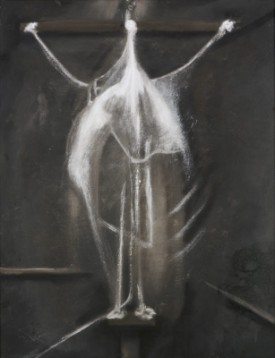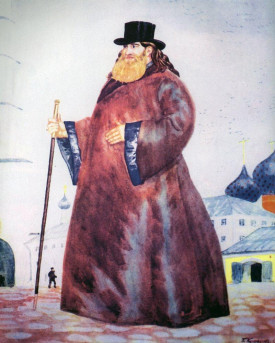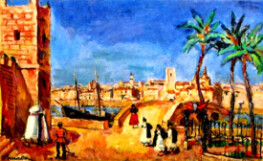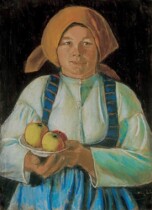Three Studies for Figures at the Base of a Crucifixion
The triptych painting Three Studies for Figures at the Base of a Crucifixion (ca. 1944) by Francis Bacon is a pivotal work in the artist’s career, that is widely considered as Bacon’s first mature piece. Bacon’s crucifixion depicts distorted and deformed figures against a hot orange background. Despite the title, Bacon stated that the painting did not directly relate to the crucifixion. The artist stressed that as a non believer, he treated the crucifixion as an act of human behavior rather than an event of religious significance. He also connected the image to Greek mythology and Aeschylus’s trilogy of tragedies, the Oresteia: the distorted figures were inspired by the Furies, mythical creatures of revenge who pursue Orestes in The Eumenides.
The painting was first exhibited at the Lefevre Gallery in London in April 1945 alongside works of more established artists: France Hodgkins, Matthew Smith, Henry Moore and Graham Sutherland. The critic John Russell recalled the painting’s strong impact and many shocked and disturbed reactions from the critics and the public. Significantly, the exhibition coincided with the final days of World War II, and the incoming information about German concentration camps that were liberated by the Allies. Even though the distorted figures in Three Studies for Figures at the Base of a Crucifixion have no direct connection to the shocking images of Auschwitz and Bergen-Belsen, the painting is often analyzed in the context of World War II. Some scholars suggest that the painting reflects the pessimism felt after the events of the Holocaust and the advent of nuclear weapons.
Bacon’s pictorial language in Three Studies for Figures at the Base of a Crucifixion has been linked to Surrealism, and the distorted figures were compared to those of Surrealist painters Joan Miró and Salvador Dalí. However Bacon preferred to distance himself from Surrealism: he was more interested in the Surrealist artistic language than the movement’s ideas and concepts. Another important influence was Pablo Picasso and his pictures of biomorphic forms from the late 1920s and mid 1930s. Most notably, similarities are found between the forms in Picasso’s Crucifixion (1930) and Bacon’s triptych. Building on Picasso exploration of forms, Bacon furthered the possibilities of painting organic forms that relate to but also distorts the human image.
Bacon’s extreme distortion of forms creates a disturbing effect that left many startled and troubled by the image. Still, Three Studies for Figures at the Base of a Crucifixion received critical and institutional recognition, in 1954 the triptych was included in Bacon’s section of the British pavilion at the Venice Biennale. However, both at the Venice and São Paulo Biennale the title of the painting was changed to Three Studies for a Larger Composition, in order to minimize potential offense or controversy. Often times Bacon painted additional versions of his major works, revisiting and developing important themes in his art. During the 1960s, he painted more versions of the theme, Three Studies for a Crucifixion (1962) and Crucifixion (1965) and in the 1980s he revisited the composition more literally in Second Version of Triptych 1944 (1988).





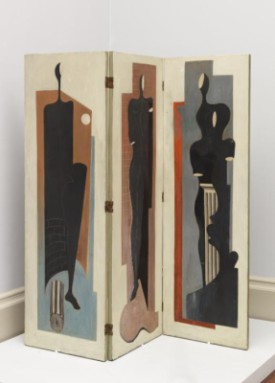

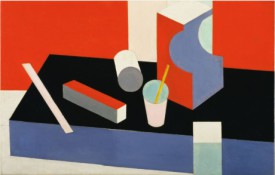
.jpg)

